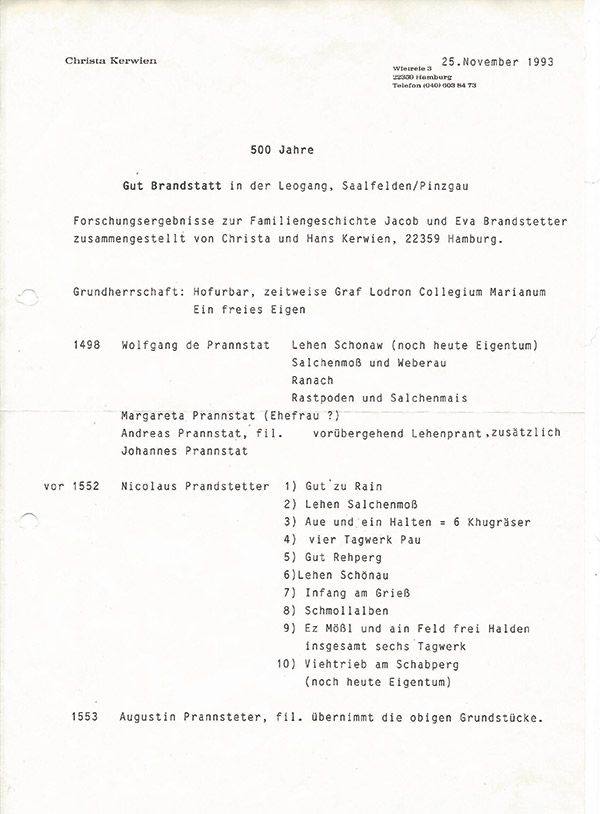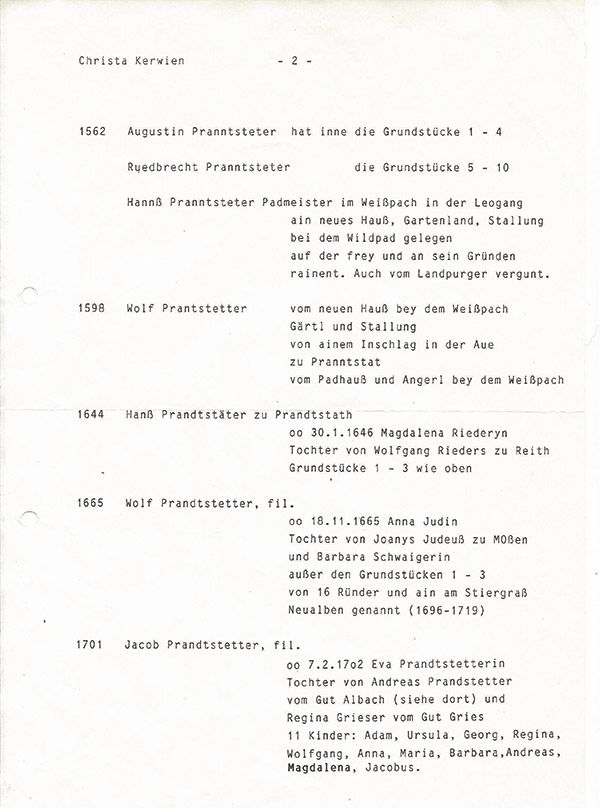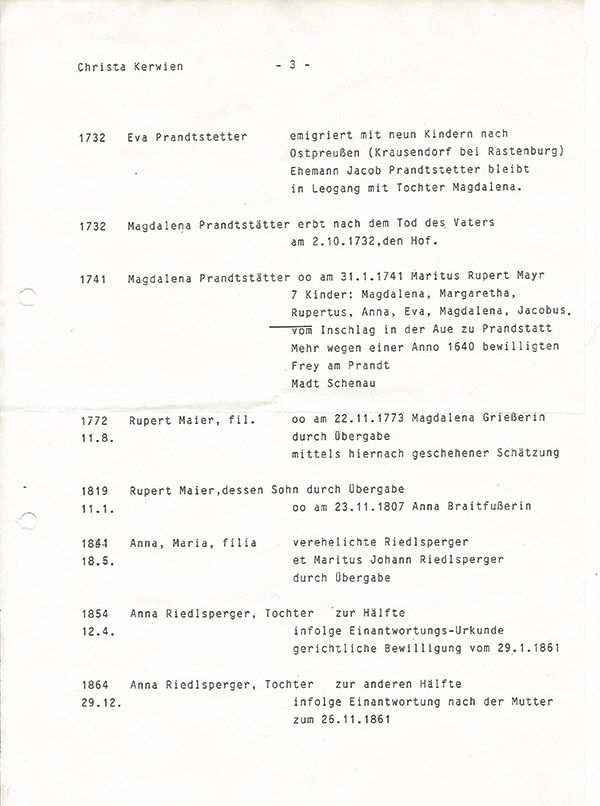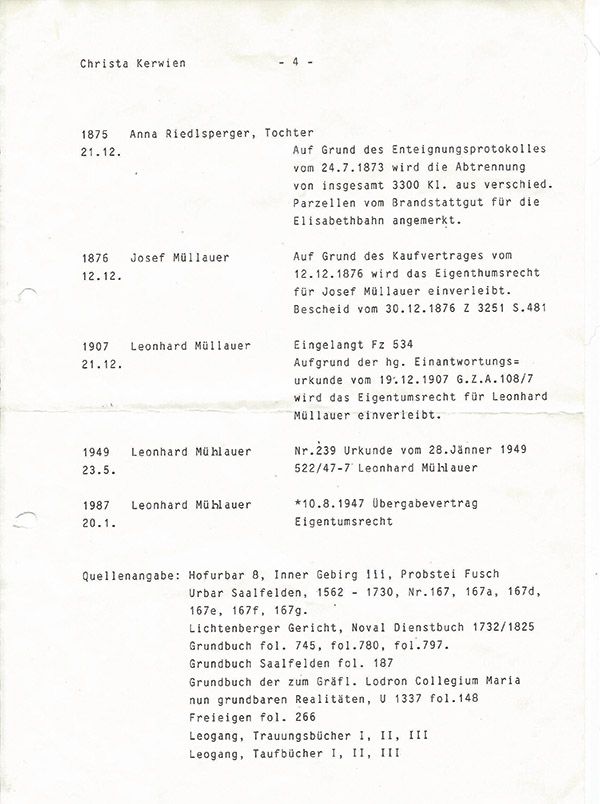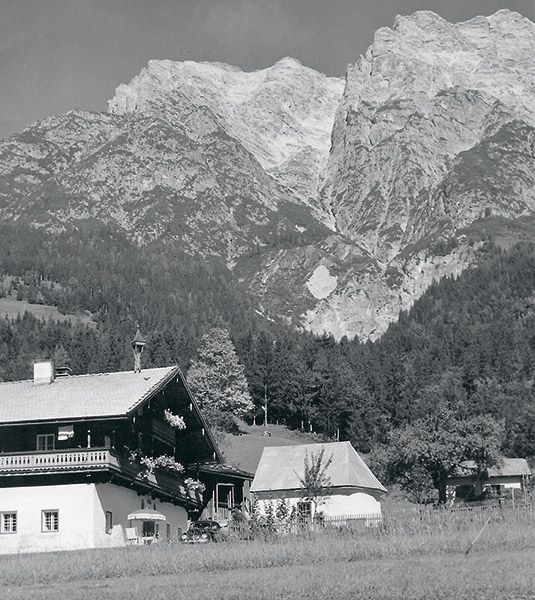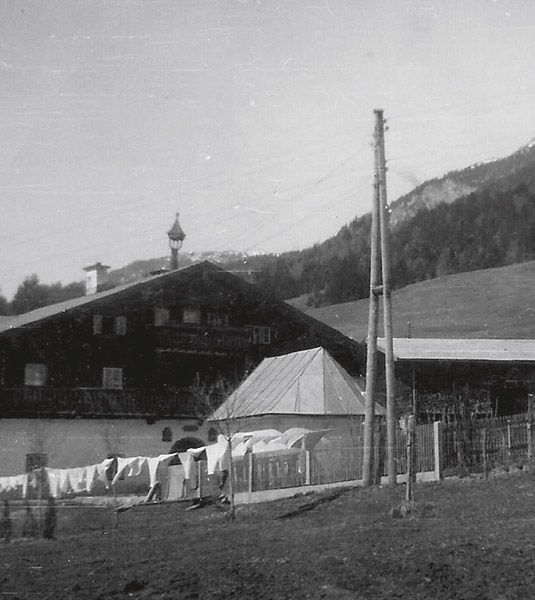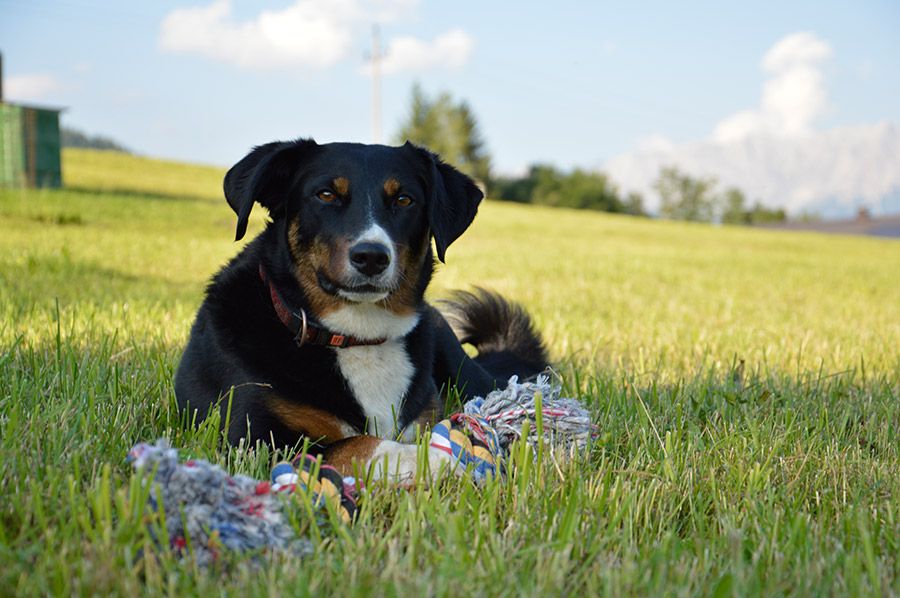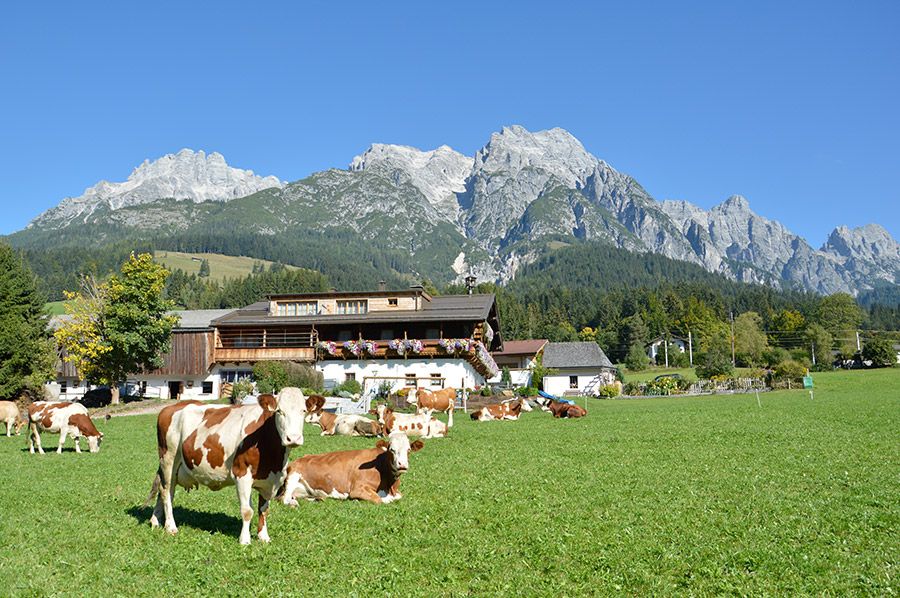Farm hotel, the Brandstatthof in Leogang
Our history
1977
The guest-house was renovated again. During this refurbishment a few of the guest rooms were upgraded, getting their own bathrooms, complete with shower and toilet. The guests' dining area was also refurbished, with a new tiled stove added.
2005
Up until 2005 there was an old farm building close to the farm, the so-called 'Machhütte'. This was used as a wood store, workshop and chicken coop. Since the building was already very old and was not worth renovating, it was torn down.
2006
A new building was built in the place of the old 'Machhütte' in 2006. Today this is the tractor and car garage, the wood store, the 'Spielberg' holiday apartment and the apartment where Leonhard & Gertraud Mühlauer live.
2010
The final renovation works took place in this year. During these refurbishment works, the first and second floors of the old farmhouse were removed. Only the exterior walls and the load-bearing walls were kept. Parts of the hayloft were removed to extend the surface area of the farmhouse. All the guest rooms were completely refurbished and the guests' dining area was extended once again.
The owners
The farm is mentioned in documents dating from 1498 and has been handed down from generation to generation. Stefan Mühlauer has been the owner of the Brandstatthof since 2015.
The Brandstatthof's line of owners dates back more than 500 years. This became apparent from documents found by Christa Kerwien, who has researched the family history over many years. Christa Kerwien's ancestor, Eva Prandtstetter and nine of her children, had to leave Leogang when the Protestants were driven out in 1732. The Protestants who were expelled fled to Krausendorf near Rastenburg (East Prussia). Eva's husband Jacob Prandtstetter and daughter Magdalena stayed in Leogang. Many married couples and families were torn apart at this time.
Here are a few key points in its history:
15th century
From around the 15th century the Brandstatthof was located in the heart of Leogang.
1498
First mentioned in a written document. The line of owners dates back more than 500 years.
1950
Upon the increase in tourism, a guest-house was opened in the 1950s. After extensive renovation work, the building was supplyed with running water and central heating. This was still not usual for the time, so the guest house was regarded as one of the most state-of-the-art in the area.
1977
The guest-house was refurbished again. During this refurbishment a few of the guest rooms were upgraded, getting their own bathrooms, complete with shower and toilet. The guest snug was also refurbished, with a new tiled stove added.
2005
Up until 2005 there was an old farm building close to the farm, the so-called 'Machhütte'. This was used as a wood store, workshop and chicken coop. Since the building was already very old and was not worth renovating, it was torn down.
2006
A new building was built in the place of the old 'Machhütte' in 2006. Today this is the tractor and car garage, the wood store, the 'Spielberg' holiday apartment and the apartment where the Leonhard & Gertraud Mühlauer family live.
2010
The last of the main refurbishment works took place in this year. No stone was left unturned. During these refurbishment works, the first and second floors of the old farmhouse were removed. Only the exterior walls and the load-bearing walls were kept. Parts of the hayloft were removed to extend the surface area of the farmhouse. All the guest rooms were completely refurbished and the guest snug was extended.
The Brandstatthof is an organic farm with a surface area of around 104 hectares, of which 22.26 hectares are pastureland, 5.78 hectares are grazing pasture, 17 hectares are foraging area on the Aberg Alm and around 60 hectares are forest. Our cattle includes dairy cows plus their offspring, sheep and lambs, pigs, cats and the farm dog Akira.
The history of the hotel
A guest house was opened in the 1950s and has been continually refurbished. The old information board is still in front of the building.
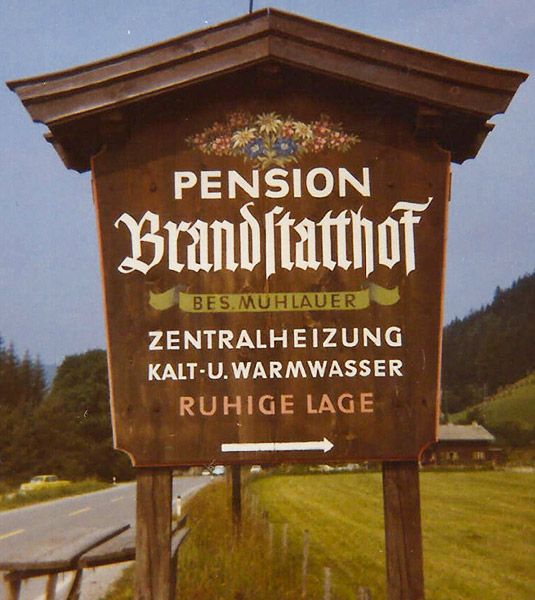
Nothing was changed on the exterior facade during the last major renovation in 2010. The old bell tower is still on the roof; it was refurbished and is now the logo of our guest house. In earlier times it was the dinner bell for the maids and the farm hands working out in the fields.
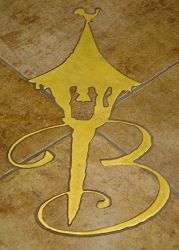
Right under the roof ridge, there is a statue to St. Donatus – a barely known saint in Salzburger Pinzgau. As a patron saint for storms, lightning, hail and fire, he has so far protected the farm.
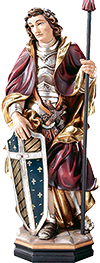
Our pastures
The farm also has 2 pastures where cows and young animals graze in the summer. For our sheep we have grazing rights on the Asitz, thanks to having shares in 'Agrargemeinschaft Neualpe'.
One of the pastures is the mountain hut 'Aberg Alm' at 1000m. The Schönau-Gütl was built in the 13th/14th century and is one of the oldest farms in Leogang. We have owned Schönau-Gütl since 1854 and since then it has been used as a "lower Alpine pasture".
The second one is the high Alpine pasture, the "Scheltau", which is located at 1540 m. In summer the cows graze there, at up to 1800 metres. The pasture belongs to 'Agrargemeinschaft Reichen-Spielberg-Scheltau' and spans 94 hectares. The oldest grazing rights document dates from 1832.
Brandstatthof Recipes
The dishes of the Pinzgau region offer very special treats and delicacies. We would like to share with you a few recipes here:
Pinzga-Muas
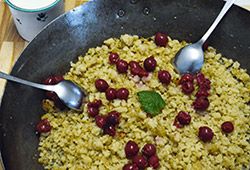
- 500 g Flour
- 3/8 litre water or milk
- 250 g butter
- salt
Salt the flour, pour over 3/8 litre of boiling water or milk and lightly work in the liquid, to create a floury dough. Melt plenty of butter in an iron pan. Add the floury dough to the pan and steam through over a low flame. 'Crumble up' the Muas using a spatula and stir carefully. The Muas must be very crumbly. Add thin slices of apple to the Muas when it is almost ready. For sweetness add some sugar on top. Traditionally it is eaten straight from the pan with a glass of milk.
Bladln
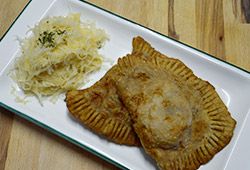
- 500 g Rye flour
- salt
- 40 g butter
- 1/8 litre water
- fat for frying
Add the finely sieved rye flour to a bowl, salt to taste and add 1 wooden spoon of butter. Pour hot water over and mix quickly to create a smooth dough; knead a little. Now shape it into a roll, measuring the width of three fingers, and divide into equal pieces. Roll the pieces of dough flat into hand-sized rounds. Now cut through the centre of the 'Bladln' to create two half-moon shaped pieces. Fry these on both sides in very hot lard. Bubbles will form as they fry. Traditionally eaten with sauerkraut.
Potato 'Nidei'
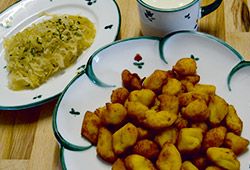
For the dough:
- 1 kg potatoes
- salt
- nutmeg
- 250 g flour
- 2 eggs
- fat for frying
For the slaw:
- 1 kg Sauerkraut
- salt
- caraway seeds
- juniper berries
- bay leaf
- pepper
- sugar
'Brezen' soup
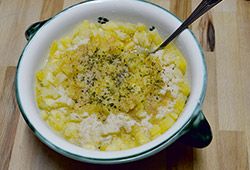
- 400 g bread cubes
- 400 g Pinzgauer cheese
- 1 clove of garlic
- 1/4 litre clear beef broth
- 2 tbsp butter
- chives
Steam the bread crumbs in a bowl put over hot water. Mix in the cheese cut into small cubes and season with some pressed garlic. Pour over the boiling beef broth. This will melt the cheese. The bread cubes will absorb all the liquid. Top with plenty of browned butter and lots of chives. Salad is often an accompaniment. 'Brezen' soup is often made with potatoes in place of the bread cubes, then it is known as 'Falsche Brezensuppe'. In times past the soup was made from broken pretzels ('Brezen'), hence the name.
Apple pancakes
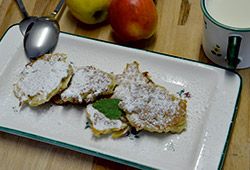
- 750 g apples
- 1 tbsp sugar
- cinnamon
- ground cloves
- a pinch of salt
- 300 g flour
- 1/4 litre water
- butter for frying
Cut the apples into thin slices, add some sugar, cinnamon and the cloves. Mix salt into the flour and add water if required. The mix should be compact and sticky in consistency. Shape the mix into a small pancake and fry in the hot fat. Traditionally, a glass of milk is served with the apple pancakes.
